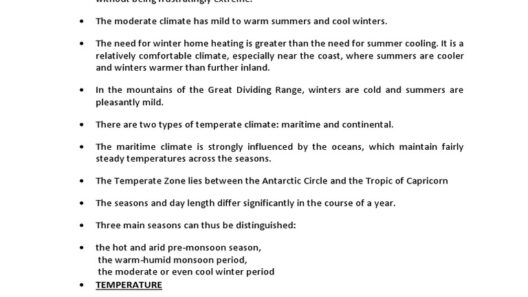Climate zones on Earth represent the varied environments that sustain life, define our weather patterns, and shape ecosystems. Understanding how many climate zones exist is essential for comprehending global biodiversity and the impacts of climate change. The classification of climate zones is influenced by numerous factors, including temperature, precipitation, latitude, and altitude. In this article, we will explore the distinct climate zones, their characteristics, and their implications for both human activities and natural ecosystems.
Climate classification systems can vary, but one of the most widely accepted methodologies is the Köppen climate classification, which divides the world into five principal climate zones. These zones—tropical, arid, temperate, continental, and polar—are further subdivided into numerous subcategories, making the analysis of our planet’s climates even more intricate.
Ultimately, the total number of climate zones can fluctuate depending on the classification system employed, but a thorough understanding of the five major categories and their nuances reveals a comprehensive picture of Earth’s climatic diversity.
The following sections will delve into each main climate zone, spotlighting their unique traits and the implications they hold for plants, animals, and human societies.
The Lush Tropics: A Realm of Diversity
Tropical climates occupy the equatorial region and are characterized by high temperatures and substantial precipitation throughout the year. The most pronounced feature of this climate zone is its lush vegetation, supported by the consistently warm temperatures and ample moisture. Rainforests thrive in areas receiving over 2000 mm (79 inches) of rainfall annually, leading to exceptional biodiversity.
Within the tropical category, we can further distinguish between tropical rainforests, tropical monsoons, and tropical savannas. Rainforest ecosystems, such as the Amazon or the Congo Basin, host an astonishing variety of flora and fauna, many of which are endemic. Tropical monsoon climates experience seasonal rainfall, while tropical savannas feature a mix of grasses and isolated trees, creating varied habitats.
The human impact on these regions has been considerable. Deforestation, agricultural expansion, and urban development threaten the intricate balance of these ecosystems. Understanding the dynamics of tropical climates is crucial in forging paths toward sustainable practices and conservation efforts.
Arid Environments: The Deserts of Extremes
Arid climates are defined by their scant precipitation, generally receiving less than 250 mm (10 inches) of rainfall per year. As a result, these environments are often characterized by vast deserts such as the Sahara or the Mojave. Arid regions can experience extreme temperature fluctuations, from scorching daytime heat to sudden nighttime chills.
There are two primary subcategories of arid climate: desert and semi-arid. Desert climates often feature sparse vegetation, with hardy plants adapted to survive in such extreme conditions. Semi-arid regions, conversely, may support grasslands and a more varied array of flora but still remain largely water-limited.
Human adaptation to arid climates has created unique challenges. Water scarcity, agricultural practices, and urbanization put pressure on these fragile environments. Strategies such as sustainable water management and conservation agronomy are essential in ensuring that both human and ecological needs are met in arid zones.
The Temperate Zones: A Balance of Seasons
Temperate climates are renowned for their distinct seasonal variations, featuring moderate temperatures and a reasonable amount of precipitation that allows for diverse ecosystems to flourish. These can be further categorized into marine west coast, Mediterranean, humid subtropical, and humid continental climates.
Marine west coast areas benefit from milder winters and cool summers, often resulting in lush vegetation and abundant wildlife. Mediterranean climates, characterized by dry summers and wet winters, promote various agricultural activities, including viticulture and olive cultivation. Humid subtropical areas exhibit hot summers and mild winters, leading to a wide range of plant and animal life, while humid continental climates often experience more extreme temperature fluctuations.
Human influences in temperate zones manifest through agriculture, urbanization, and industrial activities. Awareness of sustainable practices is essential in protecting the delicate balance within these regions and ensuring their resilience against climate change.
Continental Climates: The Essence of Extremes
Continental climates are noted for their significant temperature variation between seasons, often featuring cold winters and hot summers. These climates are prevalent in areas situated inland, far from the moderating influence of oceans. Examples include the interiors of North America and Eurasia.
Subcategories of continental climates include hot-summer humid continental and warm-summer humid continental. Each adapts to their geographical challenges, such as varying precipitation levels influenced by prevailing winds and geographical features. This climate zone supports a wealth of biodiversity but is also susceptible to the adverse effects of climate change, such as shifting growing seasons and extreme weather events.
Management practices that focus on restoring ecosystems, protecting biodiversity, and addressing climate resilience are vital in maintaining the health of continental landscapes.
Polar Regions: The Frozen Environments of Earth
Polar climates dominate the areas around the North and South Poles, characterized by frigid temperatures and minimal precipitation, typically less than 250 mm per year. The two main types—tundra and ice cap—exhibit landscapes that profoundly affect their ecological systems.
Tundra regions showcase a unique range of vegetation, including hardy grasses and low shrubs. The permafrost layer restricts root development and makes these areas particularly sensitive to warming temperatures. Ice cap climates, found primarily in Antarctica and Greenland, maintain glacial conditions that impact global sea levels and weatherpatterns.
Human exploration and research in polar areas are critical to understanding global climate dynamics. Conservation efforts must focus on protecting these vulnerable ecosystems from industrial activity and climate change, as they serve as indicators of the Earth’s overall health.
In conclusion, the Earth’s climate zones present a complex and interwoven tapestry of environments that sustain diverse life forms and human societies. Recognizing the distinct characteristics of each zone is vital for developing effective conservation strategies and addressing the challenges posed by climate change. By fostering awareness and understanding, we can work towards a more sustainable coexistence with our planet’s varied climates.






